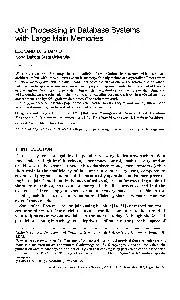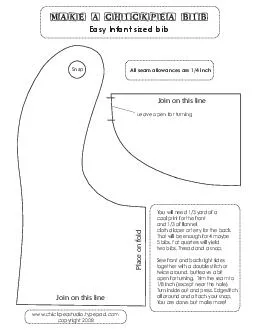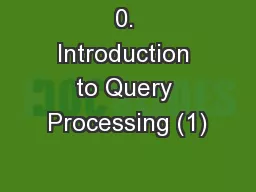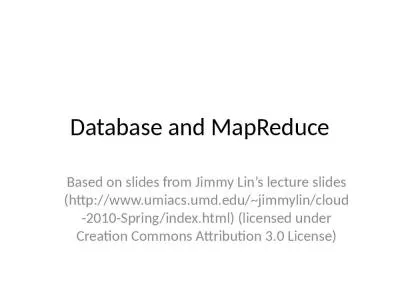PDF-join processing
Author : briana-ranney | Published Date : 2015-08-20
R If hybrid bash combines the two doing all partitioning on the first pass over each relation and using whatever memory is left to build a hash table It performs
Presentation Embed Code
Download Presentation
Download Presentation The PPT/PDF document "join processing" is the property of its rightful owner. Permission is granted to download and print the materials on this website for personal, non-commercial use only, and to display it on your personal computer provided you do not modify the materials and that you retain all copyright notices contained in the materials. By downloading content from our website, you accept the terms of this agreement.
join processing: Transcript
Download Rules Of Document
"join processing"The content belongs to its owner. You may download and print it for personal use, without modification, and keep all copyright notices. By downloading, you agree to these terms.
Related Documents














